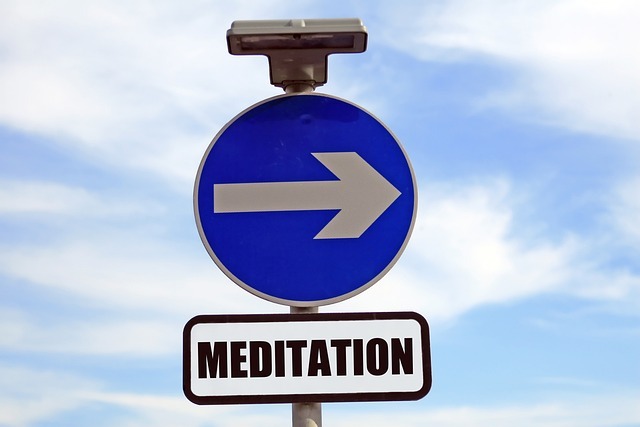Forgiveness and meditation have been linked for centuries, aiding those seeking inner peace, emotional healing, and a life of balance. Forgiveness is a process of letting go of negative feelings and thoughts, while meditation encourages mindful attention and inner connection. Together, they form a powerful combination for healing and transformation.
Introduction
Forgiveness is a vital component for restoring harmony and creating a sense of peace and well-being. It helps us to move on from the past, free ourselves from resentment, and open our hearts to growth and healing. It’s a process of releasing negative emotions such as anger, hurt, and hate, and replacing them with understanding, compassion, and peace.

Meditation, on the other hand, is an ancient practice that encourages a state of mindful attention and relaxation. It’s a way to center your mind and connect to your true self. Through meditation, you can develop clarity and insight, and cultivate an understanding and acceptance of yourself and others.
In this article, we will discuss how meditation and forgiveness can work together to create a powerful practice for inner tranquility and emotional healing. We’ll explore different types of meditation, and the numerous techniques that can be used to combine meditation and forgiveness. We will also discuss the practical steps for creating and maintaining a successful practice. Finally, we will look at some of the obstacles that may arise during your practice and how to overcome them.
So, if you are looking to unlock the power of meditation and forgiveness, then read on for the ultimate guide to harnessing the benefits of meditation for forgiveness and inner tranquility.
Types of Meditation
Meditation is a practice that has been used for centuries to promote peace, calm, and mindfulness. There is a wide range of meditation techniques that can be used to encourage self-reflection, healing, and forgiveness. The key is to find the right type that works best for you and your needs.
Mindfulness Meditation: This type of meditation is focused on paying attention to the present moment, without judgement or attachment. It helps to cultivate awareness of thoughts, feelings, and sensations, while also recognizing and releasing any attachment to them. Mindfulness meditation can also be used to help cultivate feelings of acceptance, compassion, and self-love.
Guided Meditation: Guided meditation is a type of meditation that involves listening to an audio recording that guides you through a specific journey or visualization. This type of meditation can be especially helpful for those who have difficulty focusing or accessing their inner guidance.
Focused Meditation: Focused meditation involves concentrating on a single object, such as your breath or a mantra. The goal is to maintain focus and let go of any thoughts or feelings that may arise. This type of meditation is a great tool for developing focus, concentration, and clarity.
Transcendental Meditation: Transcendental meditation is a type of meditation that involves the use of a mantra or word to help achieve an altered state of consciousness. This type of meditation can be used to access inner wisdom, heal emotional pain, and find inner peace.
Loving-Kindness Meditation: Loving-kindness meditation is a type of meditation that involves sending and receiving love and kindness. This type of meditation promotes an open heart, kindness to self and others, and an overall feeling of peace and wellbeing.
No matter what type of meditation is chosen, the key is to be consistent and patient. Meditation takes practice, and the more you do it the more benefits you will experience. Each meditation technique offers unique benefits, so it's important to experiment and find the right practice for you.
Techniques for Meditation and Forgiveness
Meditation can be an incredibly powerful tool in helping us to move beyond resentful and hurtful thoughts and feelings to find peace and forgiveness. There are several different techniques that can be used in a meditation and forgiveness practice. These techniques include breathing exercises, positive affirmations, visualization, gratitude practice and body scanning.
Breathing Exercises: When using breathwork in a meditation practice, we pay attention to the breath and use it to bring us to a state of relaxation and inner peace. Deep breathing techniques can help to calm the nervous system and help us to let go of any negative emotions associated with resentment. Paying attention to the breath and counting our breaths can bring us into a more mindful state.
Positive Affirmations: Using positive affirmations during meditation can help to cultivate a sense of peace and forgiveness. Positive affirmations can help to open our hearts and bring us closer to a place of understanding and acceptance. Examples of positive affirmations for forgiving ourselves or others include, “I am open to forgiving myself & others,” “I choose to open my heart to love and compassion,” and “I embrace peace and forgiveness.”
Visualization: Visualization can be used to bring us closer to the intention of forgiveness. During visualization we can imagine ourselves enveloped in a peaceful and loving light. We can also imagine how forgiveness may look and feel in our hearts. We can imagine a peaceful place for ourselves or the person we need to forgive.
Gratitude Practice: Gratitude has been shown to be incredibly powerful in cultivating feelings of forgiveness. During a meditation practice, we can focus on feeling grateful for all the blessings in our lives. This can be especially helpful if we’re struggling to forgive a difficult or painful situation.
Body Scanning: Body scanning can be a powerful tool for bringing awareness to any negative emotions associated with resentment. During a body scan, we focus on different areas of the body and bring awareness to any sensations that arise. By being aware of our body’s responses to the feelings of resentment, we can begin to move past those feelings and towards peace and forgiveness.
These techniques can be used in combination or individually to help cultivate a sense of inner peace. By incorporating meditation and forgiveness into our practice, we can move past any resentful feelings and find a sense of tranquility.
Practical Steps for a Meditation and Forgiveness Practice
Meditation and forgiveness are two interrelated practices that can bring immense peace and serenity into our lives. If we take the time to learn and practice them, we can enjoy the life-changing benefits that come from them. In this section, we’ll explore practical steps for creating a meditation and forgiveness practice.
Preparing for Meditation:
The first step to a successful meditation practice is to create an environment that is conducive to meditation. This means avoiding distractions and creating a quiet and comfortable atmosphere. You may want to start by dimming the lights and lighting some candles or incense. Then, if possible, turn off all electronics to eliminate any distraction. Once you have your space ready, begin to focus on your breathing. Sit in a comfortable position, with your back straight, legs crossed, and eyes closed. Start to take slow, deep breaths, and follow your breath in and out of your body, allowing your body and mind to relax.
Setting an Intention:
Once you are in a relaxed state, begin to set an intention for your practice. This can be anything from simply wanting to be more mindful or to being focused on a particular emotion or intention. Make sure to keep your intention positive and to think of it as something that you are committing to with an open heart.
Creating a Sacred Space:
Creating a sacred space is another important step in preparing for meditation. This can be a physical space, such as a room in your home, or it can be an inner space within your mind. In either case, you should make sure to set the intention to create a space of peace, love, and compassion. You can do this by selecting a particular mantra or affirmation to say each time you enter this space. This will help to create the necessary environment for a successful practice.
Starting the Practice:
Now that you’ve created your sacred space, it’s time to start your practice. Depending on the type of meditation you’re doing, there are different techniques you can use. For example, if you’re doing mindfulness meditation, focus on your breath and notice any sensations or thoughts that come up without judgment. If you’re doing guided meditation, follow the instructions of the guide and focus on the visualization.
Letting Go of Resentment:
Forgiveness is an important part of any meditation practice. It helps to free us from any emotional burdens we may be carrying. To let go of resentment, start by acknowledging the feeling and then focusing on the positive aspects of the situation. You can also create an affirmation that will help to reprogram your thought patterns and help you to move on. Some examples of affirmations for forgiveness are:
“I forgive myself and others.”
“I release the anger and resentment I have been holding on to.”
“I choose to let go of the past and move on.”
By focusing on these affirmations as part of your practice, you can allow yourself to let go of any feelings of resentment and move forward in a positive way.
By taking the time to commit to both meditation and forgiveness, you can open yourself up to a new world of peace and serenity. With patience and practice, you can create a powerful and meaningful practice that will help you to live a happier and more fulfilled life.
Overcoming Obstacles
Meditation and forgiveness practices can be difficult to maintain. The practice of forgiveness often requires us to let go of long-held resentments and grudges. Meanwhile, meditation can be hard to achieve in our busy lives, and it can be challenging to stay focused and dedicated. Fortunately, there are strategies and techniques that can help us overcome the obstacles we may encounter.
Difficulty Concentrating:
For many of us, concentration can be a major obstacle when it comes to meditation. It can be hard to stay focused on the breath or the mantra we are repeating for an extended period of time. To help with this, consider using visual aids such as mala beads or focusing on the flame of a candle. Additionally, if the mind wanders off, gently bring it back to the center of the practice without judgment and try to stay in the present moment.
Anxiety and Stress:
For many of us, stress and anxiety can be an issue when it comes to meditation and forgiveness practices. In this case, it is important to acknowledge and accept negative feelings without judgment. Practice deep breathing and focus on the present moment. Try to relax the body and release the tension. Additionally, if necessary, seek professional help to help manage and cope with anxiety or stress.
Lack of Motivation:
Our motivation to practice meditation and forgiveness can easily wane if we are not mindful. To stay motivated, it is important to establish an achievable goal and set a realistic schedule. Reach out to the community for support and remember to reward yourself for progress. Appreciate the small victories and take breaks when needed.
By understanding the obstacles we may encounter, we can be better equipped to overcome them and stay dedicated to our practice. Developing a positive attitude and having realistic expectations can help us to remain focused on our goals and reap the benefits of meditation and forgiveness.

Conclusion
Meditation and forgiveness are powerful tools for improving our mental and emotional well-being. By using meditation and forgiveness together, we can alleviate the stress and resentments that can hold us back from living our best lives. When we actively practice forgiveness, we can learn to accept ourselves, our experiences, and others without judgment. This allows us to move forward in life with a new perspective and a sense of peace.
Meditation also provides a variety of benefits, including stress relief, increased focus and clarity, improved mental and emotional wellbeing, and overall better health. When we practice meditation, we learn to become aware of our thoughts and feelings and to accept them without judgment. This helps us become more mindful and aware of our present moment reality.
By combining meditation and forgiveness, we can learn to let go of resentments and find inner peace. We can use techniques such as positive affirmations, visualization, gratitude practice, and body scanning to deepen our practice. Preparing for our practice by setting an intention, creating a sacred space, and starting the practice can also help us on our journey.
Though there can be obstacles to our practice, such as difficulty concentrating, anxiety, and lack of motivation, there are ways to overcome these challenges. With patience and dedication, we can learn to let go of our resentments through meditation and forgiveness.
In conclusion, forgiveness and meditation can be powerful tools for improving our mental and emotional well-being. By actively practicing forgiveness and meditation, we can find inner peace and contentment. With patience and dedication, we can learn to let go of resentments and find true tranquility.






